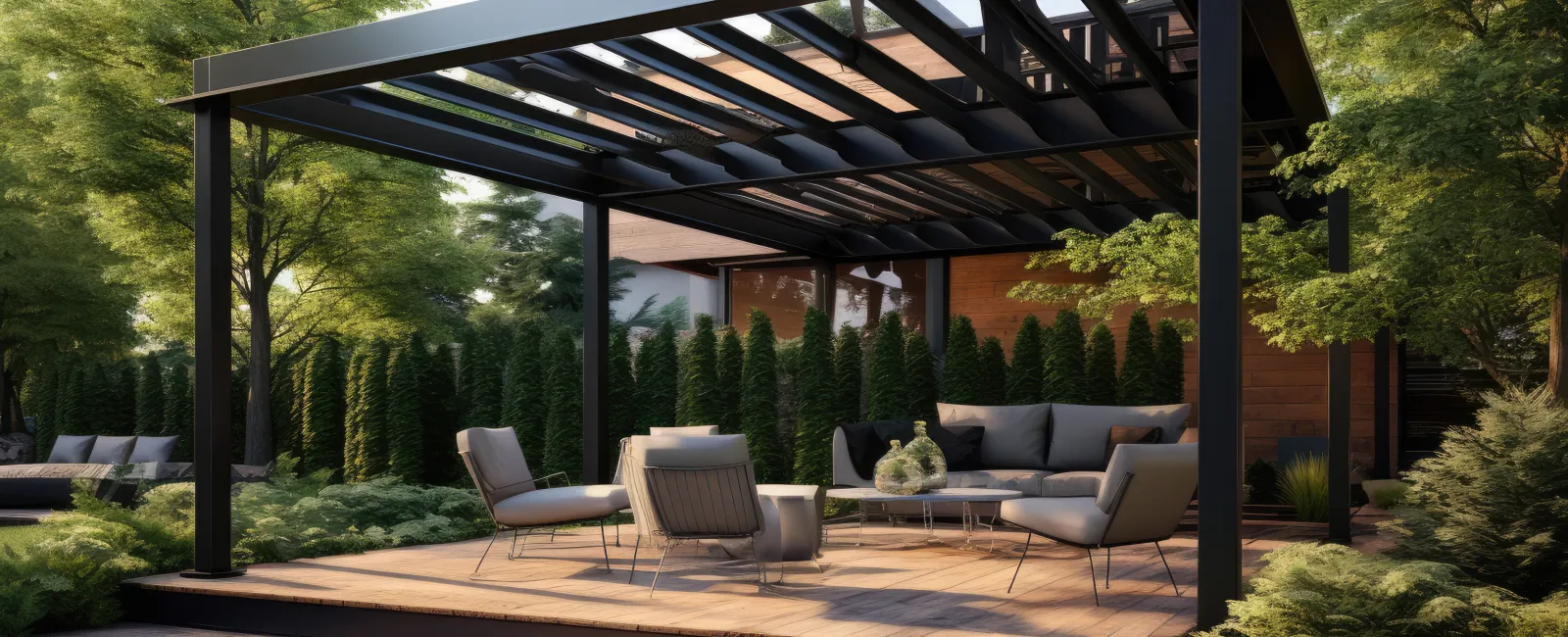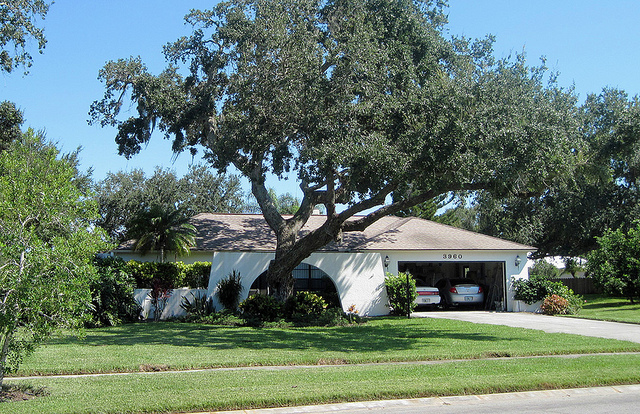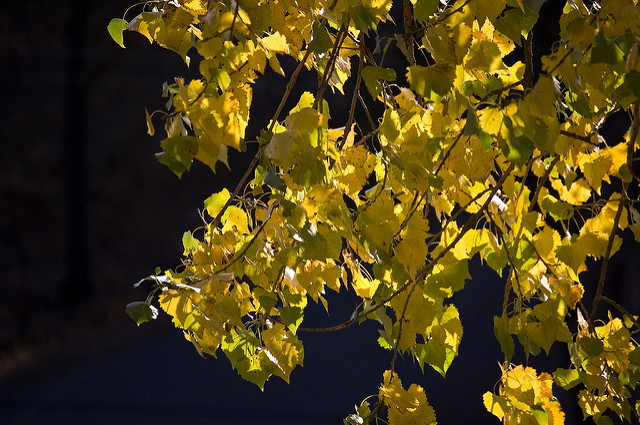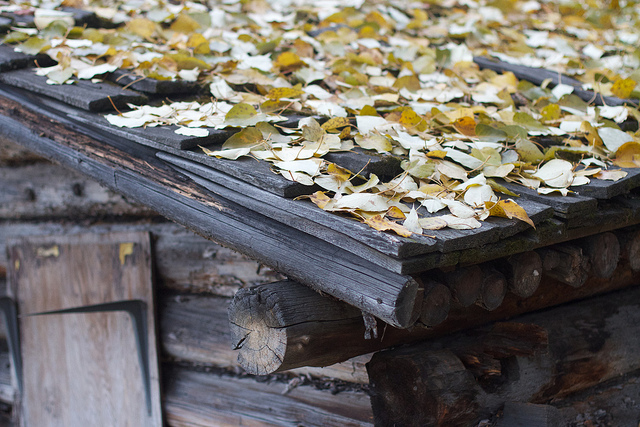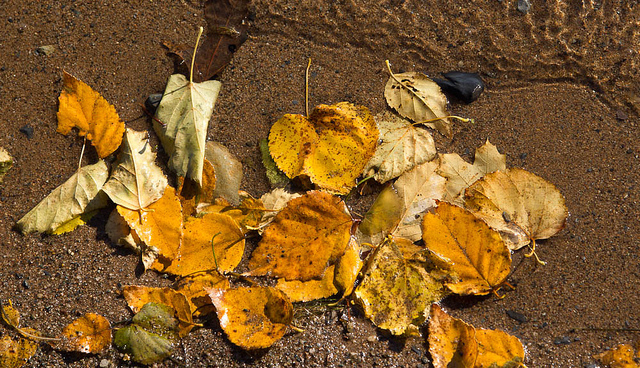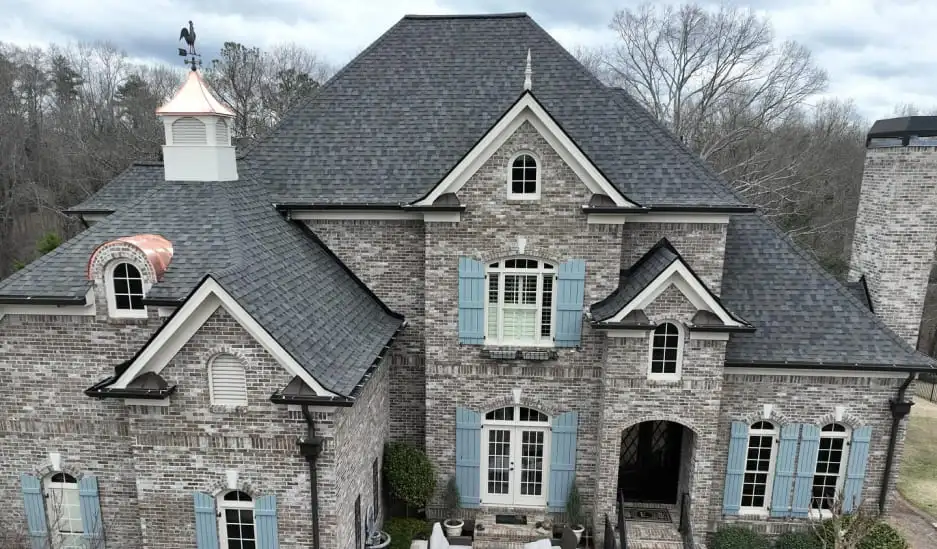Never plant or keep trees based on looks alone! Certain tree species have a horrible reputation when it comes to rooftops and homes: Let’s talk about a few of the worst offenders and why these (often beautiful) species are actually bad news.
Pine (Particularly White Pine)
Pines have long been the bane of roofers, gutter cleaners, and other professionals’ existence. Many homeowners choose or keep pine species because they are technically evergreen and it’s assumed that they don’t shed much. This is not true. Many species of pine shed just as much as fir trees, if not more so. Those needles quickly pile up in your gutter and on your roof, where they encourage insects to nest and trap moisture to create damage. The way pine needles layer together quickly creates thick mats that immediately attract dust, pollen, and other types of debris until your roof is in trouble. And we haven’t even mentioned the pine cones, which in some species can become dangerous objects during high storms: It all adds up to more frequent roof repair.
Oak
Oaks, especially species like the red oak, have a problem: They look very pretty, so homeowners usually want to keep them. However, if you’ve lived near an oak you know that they tend to be large trees with massive crowns that often end up hanging over rooftops. You never hand overhanging branches, which can so easily damage roof materials if they fall. Those branches will also rain down leaves throughout the fall, creating thick mats of leaves that harbor pests and soak up rain, encouraging mold and moisture damage.
Cottonwood
Cottonwoods are infamous in the roofing industry for being one of the worst trees to plant near your home. The Cottonwood may look pretty in the fall, but it’s an enormous liability: The tree tends to rain down twigs, leaves, and seeds around the year, constantly layering your roof with debris that encourages moss and mold growth. Additionally, they are hosts to many unpleasant larvae and insects, which in turn encourage birds and bird droppings – bad news for your roof. Note that willow trees tend to suffer from similar problems.
Maple and Aspen
We grouped maple and aspen together because when homeowners choose trees they often think of maple and aspen as being similar. Often, people buy these species as small saplings and plant them close to the house. Unfortunately, these trees grow very quickly and soon spread against your siding and roof. Here they litter their famous leaves and other debris that requires frequent cleanup. Additionally, while maples can hold their own, aspens in particular are susceptible to rots or fungi that can destroy trees.
Birch and Poplar
These are two other species often grouped together by homeowners. While their leaves are relatively easy to clean, these are some of the weakest trees when it comes to disease, weather, borers and other problems. This, combined with their shallow and pervasive root systems, make them poor choices.

